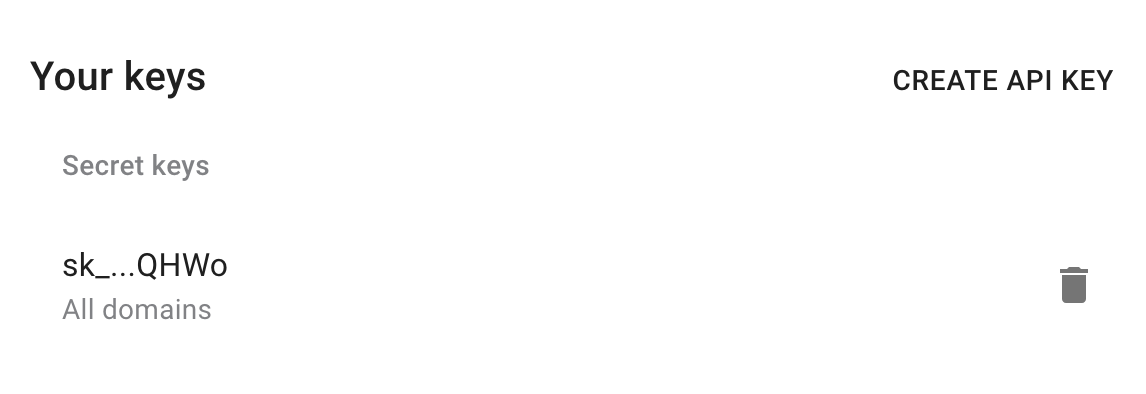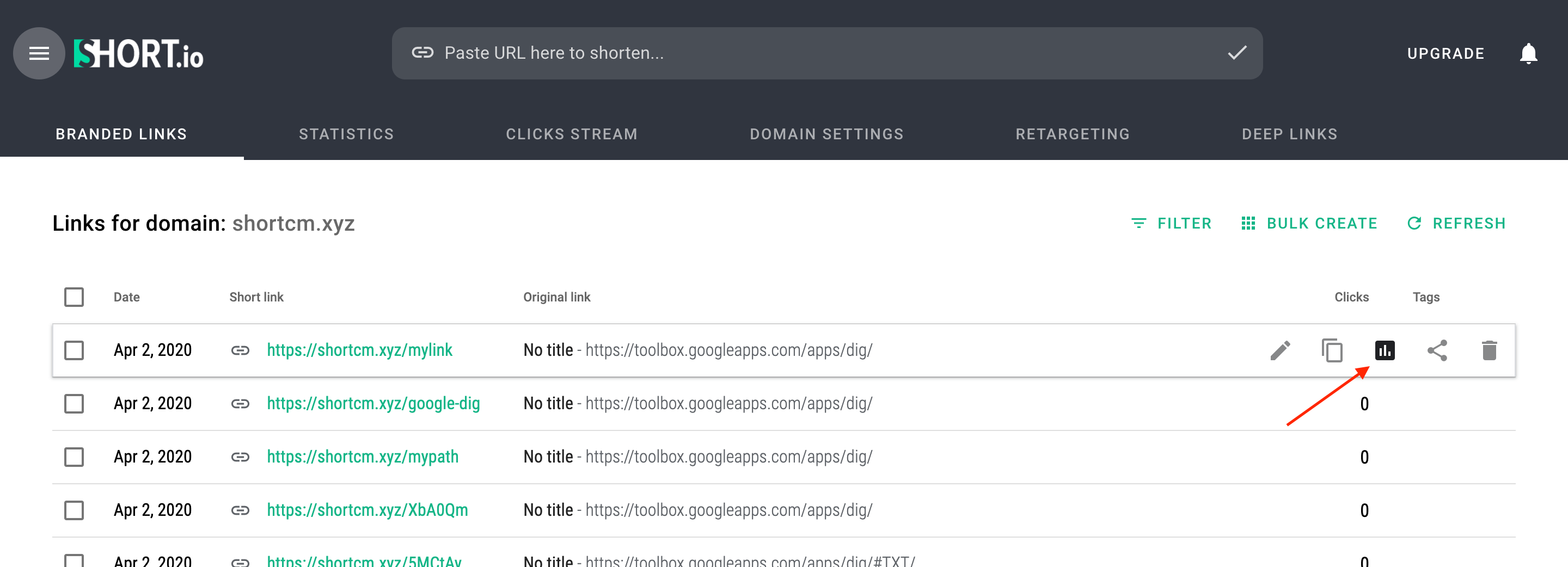Deleting a region targeting rule
Information below might be outdated - please visit our recently updated API Reference
The instruction below shows how to delete a region targeting rule for a link.
1) Get your API key here: https://app.short.io/settings/integrations/api-key
- Click "Create API key".
- Add a Secret key.

2) Copy an ID of a short link you want to delete a region targeting rule.
- Open the statistics of the short link.
- Copy the link ID.


3) Install prerequisites for requests.
pip install requestsnpm install --save axiosNow everything is ready to run the following snippet. It will delete a region targeting rule.
4) Create a file: filename.py/ .js/ .rb. Use the code snippet below.
Please, replace link_idString and ISO country code, ISO region code with appropriate values.
You need to specify country ISO code and country region code in ISO-3166-2 format. Example: US (country) - United States; NY (region) - New York. You can find a necessary ISO code here: http://www.geonames.org
import requests
url = "https://api.short.io/link_region/link_idString/DZ/07"
headers = {'authorization': '<<apiKey>>'}
response = requests.request("DELETE", url, headers=headers)
print(response.text)const axios = require('axios');
const options = {
headers: {
'content-type': 'application/json',
authorization: '<<apiKey>>'
}
};
axios.delete('https://api.short.io/link_region/LINK_ID/AO/18', options)
.then(function (response) {
console.log(response.data);
}) .catch(function (response) {
console.log(response);
});require 'uri'
require 'net/http'
require 'openssl'
url = URI("https://api.short.io/link_region/LINK_ID/AO/17")
http = Net::HTTP.new(url.host, url.port)
http.use_ssl = true
http.verify_mode = OpenSSL::SSL::VERIFY_NONE
request = Net::HTTP::Delete.new(url)
request["authorization"] = '<<apiKey>>'
response = http.request(request)
puts response.read_body5) Launch the file.
python filename.pynode filename.jsruby filename.rb6) JSON Response (a region targeting rule is removed).
Once you run the code, you will see the response.
{
success: true
}Updated 2 months ago
